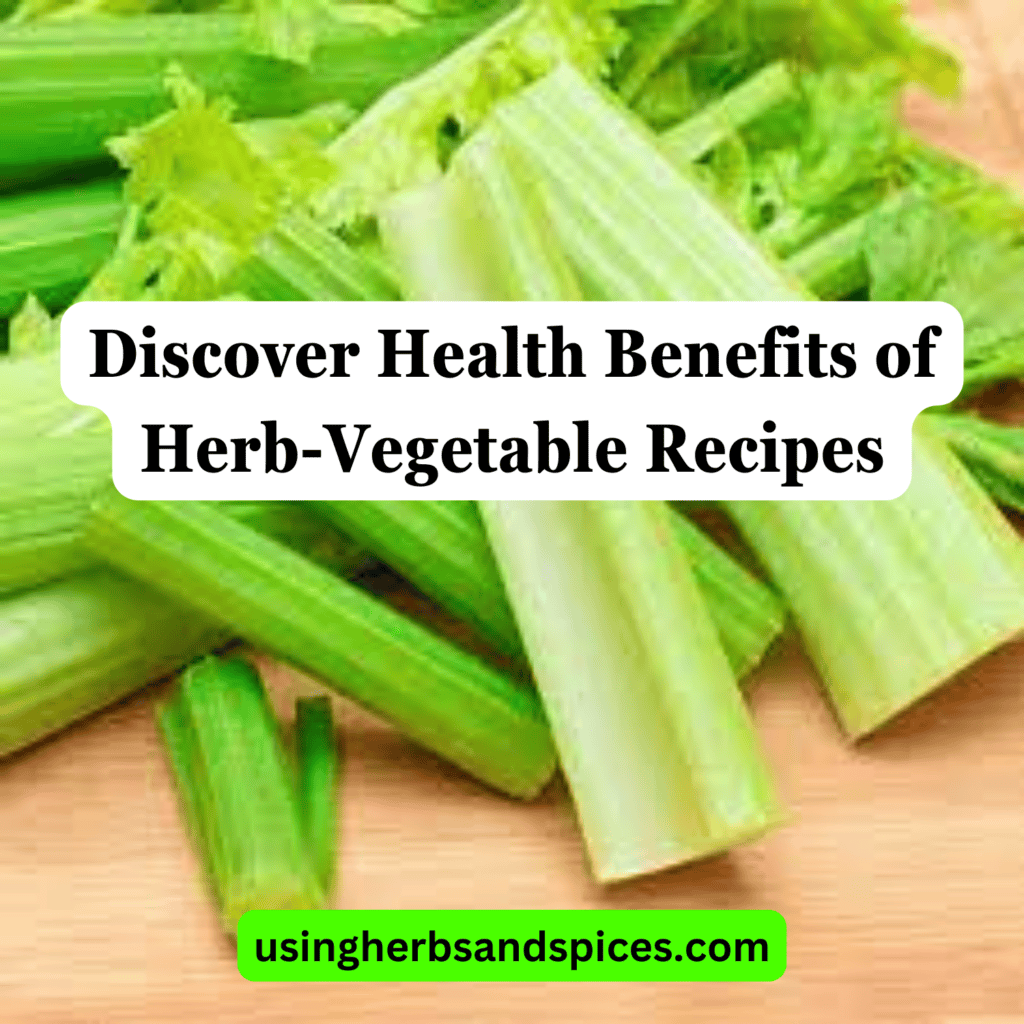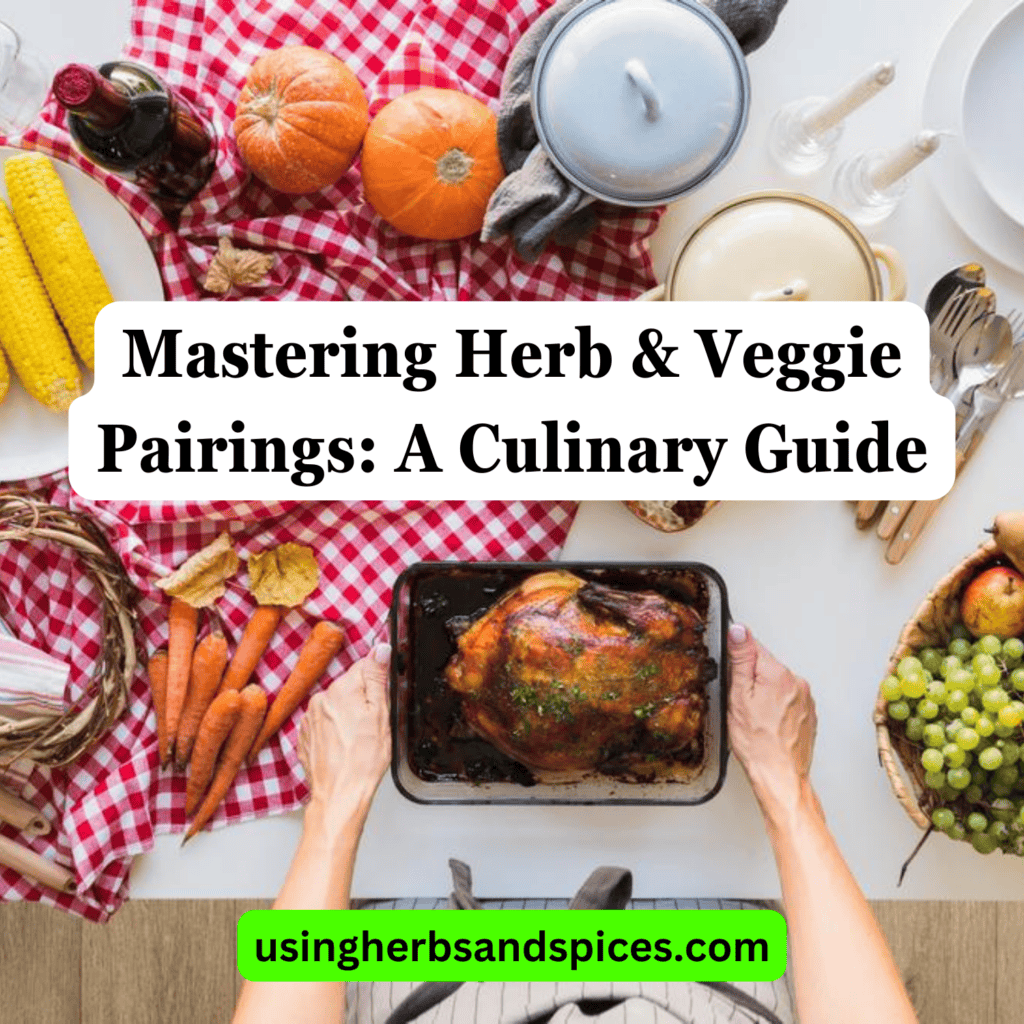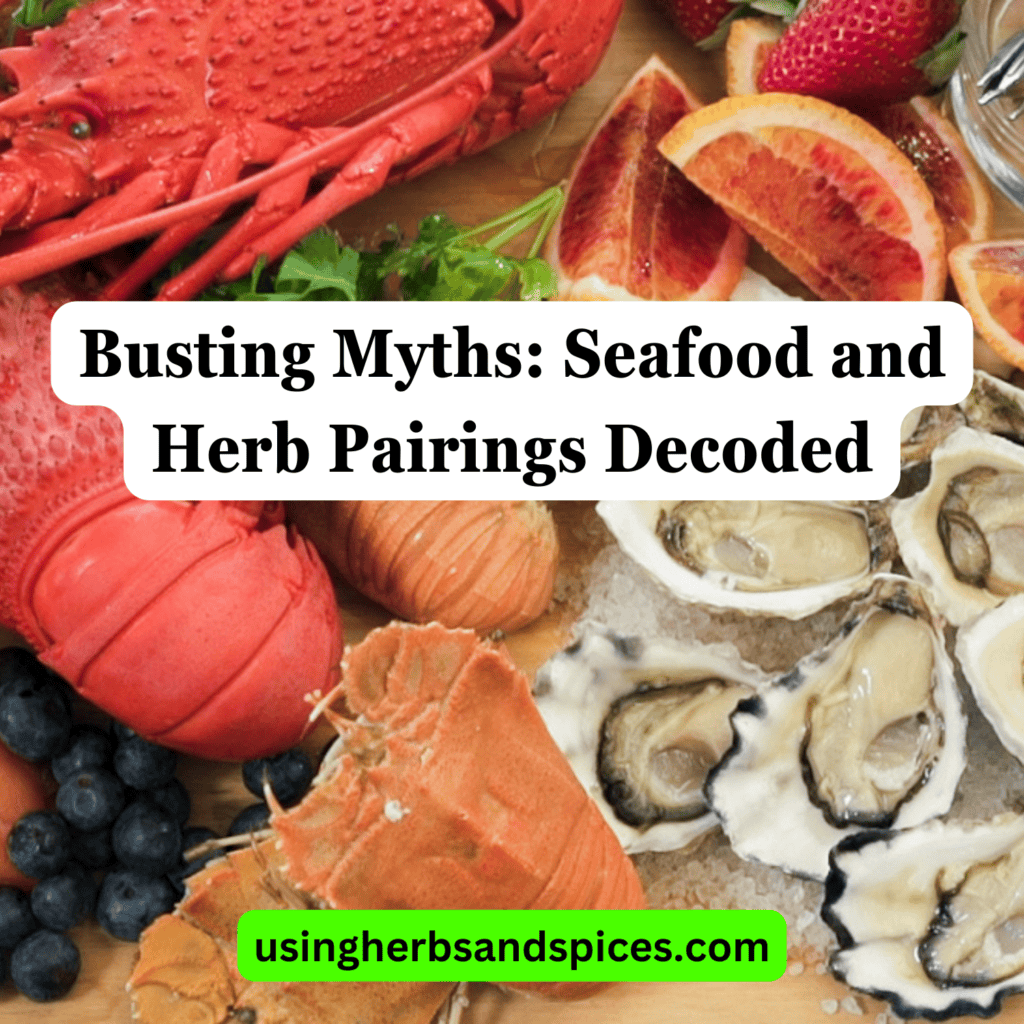Imagine you’re standing in the heart of an Italian kitchen, surrounded by the intoxicating scents of fresh herbs and simmering sauces. You know that mastering the art of Italian cooking isn’t just about following recipes; it’s about understanding the subtle interaction of flavors that these essential herb pairings bring to the table. From the classic basil and tomato to the less explored sage and pork, each combination reveals a layer of authenticity in your dishes that’s hard to replicate. But there’s more to these pairings than meets the eye. Let’s venture on a culinary journey to discover the secrets behind these vibrant flavors and how they can elevate your cooking from good to truly sublime.

Key Takeaways
- Basil and tomato pairings are fundamental in Italian dishes, celebrated in pestos and caprese salads.
- Rosemary enhances lamb dishes, showcasing traditional Italian marination techniques and culinary heritage.
- Oregano is a key herb in pizza, rooted in Italian tradition and essential for authentic flavor.
- Thyme is used to elevate chicken dishes, with mastery in preservation techniques enhancing the meal’s aroma and taste.
- Sage transforms pork dishes by complementing the meat’s natural sweetness and adding depth and complexity.
Basil and Tomato
Basil and tomato, a classic pairing, elevates any Italian dish with its fresh, aromatic flavors. You’ve likely tasted this dynamic duo in a variety of meals, from the simplest pasta sauces to the most elaborate gourmet dishes. It’s a combination that, at its core, speaks to the heart of Italian cooking—simple ingredients that bring out the best in each other.
When you experiment with pesto variations, you’re diving into a culinary tradition that celebrates the basil and tomato partnership. Whether you’re opting for a traditional Genovese pesto or something more adventurous with sun-dried tomatoes, you’re engaging with a piece of Italian heritage that’s as delicious as it’s versatile.
And let’s not forget the iconic caprese salads. This simple yet sublime dish showcases the harmony between ripe tomatoes, fresh basil, and creamy mozzarella. It’s a reflection of the idea that you don’t need a long list of ingredients to create something truly magical. When you prepare a caprese, you’re not just making a salad; you’re crafting an experience that connects you to a community of food lovers who appreciate the beauty in simplicity.
Rosemary and Lamb
Shifting our focus from the garden to the pasture, rosemary and lamb emerge as a pairing that embodies the robust, earthy flavors of Italian cuisine. This duo brings a sense of belonging to those who crave the authentic tastes of Italy, merging the rustic charm of rosemary harvesting with the artful craft of lamb marination techniques. When you pluck rosemary fresh from the garden, you’re not just gathering herbs; you’re harvesting the essence of the Italian countryside, ready to infuse your lamb with an aromatic depth that’s both invigorating and comforting.
To truly honor this pairing, learn the nuances of rosemary harvesting – the best times of day, the ideal maturity of the plant, and the proper way to preserve its potent oils. Combine this knowledge with masterful lamb marination techniques, allowing the meat to absorb the rosemary’s fragrant oils, mingling with garlic, olive oil, and perhaps a touch of lemon, to tenderize and enrich the lamb’s natural flavors.
This isn’t just cooking; it’s an act of passion, a ritual that connects you to the heart of Italian culinary tradition. As you prepare rosemary-infused lamb, you’re not just making a meal; you’re weaving yourself into the fabric of an age-old culture, embracing the soulful harmony of flavors that have been cherished for generations.
Oregano and Pizza
Oregano’s bold flavor is the unsung hero of pizza, exploring a simple dough into an aromatic masterpiece that captures the essence of Italian cuisine. It’s not just about sprinkling some herb on top; it’s about understanding oregano’s roots in Italian tradition and its journey from plant to plate. The magic begins with oregano cultivation, a process that intertwines with the very soil of Italy, imbuing the herb with a depth of flavor unmatched by its counterparts grown elsewhere.
To truly appreciate oregano on your pizza, you must investigate the art of drying methods. These methods, whether traditional air-drying under the Mediterranean sun or the careful use of dehydrators, concentrate oregano’s essential oils, amplifying its pungent, earthy tones. This is where science meets tradition, ensuring every pinch of oregano showers your pizza with a burst of flavor that’s both complex and comforting.
As you sprinkle oregano over your next pizza, remember you’re not just adding a herb. You’re weaving a piece of Italian heritage into your meal, connecting with a community that values authenticity, passion, and the simple joy of eating well. Oregano isn’t just an ingredient; it’s a bridge to Italy’s heart, making every bite of pizza a journey worth savoring.
Thyme and Chicken
Thyme guarantees that chicken dishes with a layer of flavor that elevates the simple to the sublime, transforming your meal into a tribute to Italian culinary tradition. When you marinate your chicken with thyme, you’re not just cooking; you’re crafting an experience. There’s something deeply comforting yet distinctly sophisticated about the aroma of thyme mingling with chicken as it cooks, promising a dish that’s both hearty and refined.
To guarantee this herb’s vibrant flavor is always at your fingertips, mastering thyme preservation is key. Whether you’re drying it to concentrate its earthy essence or freezing it to retain its freshness, keeping thyme on hand means you’re always ready to imbue your chicken with its signature flavor.
Imagine the difference when you sit down to a meal where thyme’s subtle, slightly minty notes have had hours to permeate your chicken marinades, transforming the meat into a tender, flavor-packed masterpiece.
Sage and Pork
You’re stepping into a world where sage transforms pork into a dish that’s deeply aromatic and richly flavored.
Let’s explore how sage’s earthy tones perfectly complement pork’s natural sweetness, and the techniques that enhance this pairing to new heights.
Whether you’re roasting, sautéing, or grilling, understanding sage’s flavor profile and cooking methods will reveal a classic Italian culinary experience.
Sage’s Flavor Profile
Sage’s earthy and slightly peppery flavor profile makes it the perfect companion for enhancing the rich taste of pork dishes. When you explore sage cultivation, you’re not just growing an herb; you’re nurturing a tradition steeped in history and flavor.
The sage in your garden or on your windowsill is more than an ingredient; it’s a tribute to your commitment to authentic, flavorful cooking. Beyond its culinary uses, sage boasts a myriad of health benefits, making it a powerhouse in your kitchen.
Imagine the depth and complexity it adds to your pork, transforming each bite into a symphony of flavors that resonate with the soul of Italian cuisine. You’re not just cooking; you’re creating moments, memories, and a sense of belonging with every dish seasoned with this remarkable herb.
Cooking Techniques Explored
Having explored the rich, earthy essence of sage and its affinity for pork, let’s examine how best to combine these in cooking to elevate your Italian dishes.
Perfecting your herb chopping technique is essential; fine, even cuts of sage release its aromatic oils, mingling exquisitely with the succulence of pork.
The secret to ingredient blending lies in timing and temperature. Sear your pork to a golden perfection, then introduce finely chopped sage in the last few minutes of cooking. This method guarantees the sage’s flavor infuses the pork without losing its vibrant character.
Embrace this blend to bring a touch of Italian authenticity to your table, creating dishes that resonate with warmth, tradition, and a sense of belonging.
Parsley and Fish
When it comes to elevating fish dishes, fresh parsley isn’t just an add-on; it’s a game-changer.
You’ll need to know how to pick the freshest bunch and understand which fish varieties it complements best.
From grilling to poaching, we’ll guide you through the cooking techniques that perfectly pair this vibrant herb with your seafood creations.
Choosing Fresh Parsley
To elevate your Italian seafood dishes, selecting fresh parsley is crucial, as it adds a vibrant, clean flavor that perfectly complements the richness of fish. Here’s how you can guarantee you’re choosing the best:
- Look for Bright Green Leaves: Fresh parsley should look lively and vibrant, not wilted or yellow.
- Sniff for Freshness: Fresh parsley has a distinct, clean smell. If it smells off or mildewed, pass it by.
- Learn about Parsley Cultivation: Understanding how parsley is grown can guide you to select the freshest bunches.
- Understand Parsley Storage: Proper storage is key to maintaining freshness. Parsley can last longer when stored correctly in your fridge.
Fish Varieties Compatibility
Pairing parsley with the right fish can truly transform your Italian seafood dish into a culinary masterpiece. Imagine the delicate balance of flavors when fresh parsley meets the succulent textures of your favorite fish. It’s not just about adding a herb; it’s about creating an experience that resonates with the heart of Italian cooking.
For a truly authentic touch, consider the classic combinations of dill and salmon or fennel and anchovies. These pairings are more than just traditional; they’re a tribute to the timeless harmony between herbs and seafood. Dill’s slightly sweet undertones bring out the rich flavors of salmon, while fennel’s anise-like taste complements the boldness of anchovies, making each bite a journey through the essence of Italian cuisine.
Cooking Techniques Overview
Mastering the art of cooking with parsley and fish opens the door to an array of exquisite Italian dishes, taking your culinary skills to new heights. Here’s how you can enhance your kitchen prowess:
- Sautéing Basics: Start with a hot pan, a touch of olive oil, and add your fish. Halfway through, introduce finely chopped parsley to infuse its fresh flavor.
- Grilling Herbs: Before grilling, marinate your fish with olive oil and a generous amount of parsley. This not only prevents sticking but elevates the taste.
- Timing is Key: Add parsley towards the end of cooking to preserve its vibrant color and taste.
- Experiment and Taste: Don’t be afraid to adjust quantities. Cooking is an art, and you’re the artist. Taste as you go, ensuring every bite is a reflection of your passion and authenticity.
Garlic and Pasta
Exploring your pasta dishes to culinary masterpieces starts with understanding how the robust flavor of garlic can transform simple ingredients into a symphony of taste. It’s not just about investigating any garlic variety with any pasta types. No, it’s about matching the distinct characteristics of garlic varieties—be it the mellow sweetness of roasted elephant garlic or the sharp bite of fresh, raw garlic—with the perfect pasta types to complement them.
Whether you’re stirring garlic into a silky aglio e olio sauce to coat your spaghetti or infusing it into a rustic tomato sauce for your penne, the right garlic can turn a good dish into a great one.
As you explore into this adventure, remember that your passion for authentic Italian cuisine is what sets these dishes apart. It’s about bringing a piece of Italy into your kitchen with each clove of garlic you peel, each pot of pasta you boil. You’re not just cooking; you’re curating an experience, a moment of belonging to a culture rich in flavors and traditions. So, embrace the variety, experiment with confidence, and let your culinary creativity flourish.
Frequently Asked Questions
Can Dried Herbs Substitute Fresh in These Pairings?
You can substitute dried herbs; just remember the flavor intensity comparison. Dried are more concentrated, so use less. Mastering rehydration techniques will also bring your dishes closer to the authentic taste you’re craving.
What’s the Best Herb for a Vegan Italian Dish?
For your vegan Italian dish, you can’t go wrong with basil for its versatility. If you’re looking for alternatives, oregano’s robust flavor offers a wonderful depth. Both bring authenticity and a sense of belonging to your cooking.
How to Store Fresh Italian Herbs Properly?
Imagine capturing the essence of Italy in your kitchen. To store fresh herbs properly, explore herb drying techniques and maintain ideal humidity levels. You’ll preserve their vibrant flavors, making every dish a masterpiece.
Are There Gluten-Free Italian Herb Mixes?
Yes, you can explore gluten-free Italian herb mixes, perfect for those with gluten sensitivity awareness. Immerse yourself in homemade mix recipes that offer an authentic touch, ensuring you’re not missing out on any flavor.
Can These Herbs Help in Digestion?
Yes, these herbs can boost your digestion! Embracing herb health benefits, you’re not just cooking; you’re honoring cultural herb uses. It’s about feeling connected, understanding each plant’s role in nurturing your body.
Italian Culinary Harmony: The Enchanting Dance of Herbs and Flavors
You’ve journeyed through the heart of Italy, where herbs whisper the secrets of centuries-old culinary traditions. Basil and tomato have danced in a timeless embrace, rosemary and lamb have sung a rustic duet, and oregano has sprinkled magic over pizza like stardust.
Thyme, sage, parsley, and garlic each found their perfect partners, elevating dishes to symphonies of flavor. Embrace these pairings, and you’ll not just cook; you’ll weave culinary spells that captivate with every bite.
Buon appetito!









